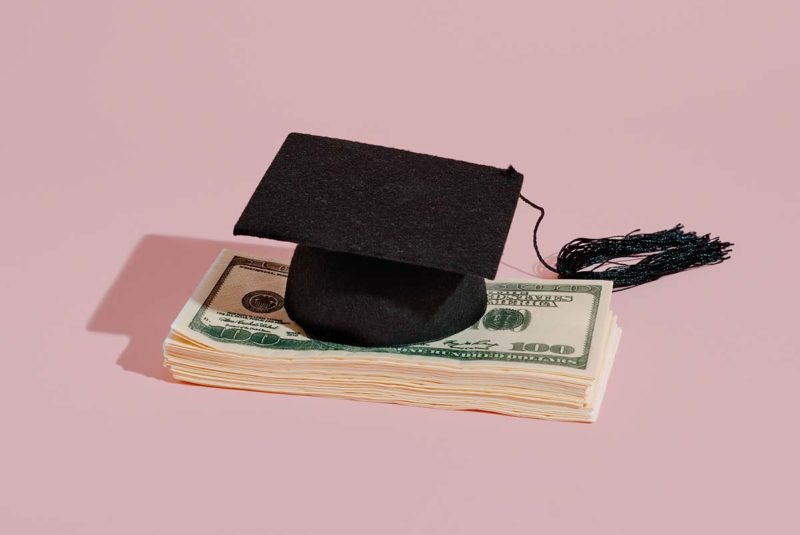If you have federal student loans, you know that payments and accruing interest have been suspended, or placed in forbearance, since March 2020 under the CARES Act. The Department of Education extended the student loan payment pause to August 31, 2023, or 60 days after the student loan debt relief program litigation is resolved.[1]
As of now, the Biden Administration hasn’t said that they plan to extend the forbearance or offer any grand scale loan forgiveness plan. With this in mind, you should begin to prepare for August 31st when payments will restart.
How can you prepare for student loan payments when forbearance ends? Let’s look at four steps you can take to ensure the smoothest transition back into paying your student loan bill.
1. Update your contact information
Whether you had existing loans that the CARES act paused payments on, or you just started getting student loans over the past two years, you should update your contact information. It’s been a while since you’ve had to make payments, or maybe it’s the first time you’ll have to make payments.
Either way, you may not be in the same situation you once were. Maybe you’ve moved, or even bought a home since the pandemic started.
But, even if nothing has changed, it’s a good idea to confirm your contact information and make sure you’re all set for when payments resume.
Another part of updating your contact information is ensuring that you have an account with your current loan servicer.
The U.S. Department of Education (ED) transferred management of many of its loans from one loan servicer to another during the pandemic. The loan servicer that handled your payments two years ago may no longer be servicing your loan. You can check who your current servicer is by logging into My Federal Student Aid.
If a new servicer is now managing your loans, you should see a notice about it when you log into your Federal Student Aid account. Just follow the instructions in the notice, set up an account and update your contact information with the new servicer. This way, no matter where your loans are, everything is up to date before the forbearance ends.
2. Review loans and repayment options
Now that you’ve updated your contact information, it’s time to evaluate your loan balance. Spend some time looking at each of your student loans, their current balance and what the interest rate will be when the forbearance ends.
Then, look at your current payment plan and determine how much your first payment will be so you can budget for it in August. The average student loan payment is $460, but yours may be higher or lower depending on your loan balance.[2]
A standard repayment plan breaks your loans up into 120 fixed payments over ten years. So once you figure out how much your payments are, plan ahead and account for them in your budget for the time you will be repaying your loans.
What if I can’t afford to resume payments?
If you can no longer afford to pay your student loan bills because of financial issues, such as a reduction in income or more expenses because you started a family, you have a few options. Here are a couple you may be able to access:
- Apply for a deferment. Depending on your financial situation and circumstances, the ED may grant you a break from making your monthly payments.
- Switch to an income-driven repayment plan. If you qualify, your loan payments will be adjusted to between 10% and 20% of your discretionary income, and any loan remaining after 20 to 25 years will be forgiven.[3]
There is no income limit to qualify for an income-driven repayment plan. Instead, eligibility is determined by your debt to income ratio (DTI).
Your DTI is the percentage of your monthly income that goes towards your monthly debts. The formula is your debts divided by your income, multiplied by 100 (to turn the result into a percentage). So if you make $2,500 a month and have $1,000 in monthly payments, your DTI is 40%. The higher your DTI is, the better your chances of qualifying for an income-driven repayment plan.
3. Determine if you should start paying now or after forbearance ends
While the pause on payments that the forbearance has provided is a welcome relief for most borrowers, some have actually continued to pay off their student loans. There are two major reasons to consider paying your student loan payments now, before forbearance ends.
- If you’re working towards Public Service Loan Forgiveness (PSLF): To qualify for the PSLF program, you must make 120 consecutive, monthly payments for your student loans before the remainder is forgiven. So the sooner you start repaying those loans, the sooner they can be forgiven. However, in certain circumstances, the forbearance period may count as if you were making payments, even if you didn’t. Check the Student Aid website for more information about these PSLF exceptions.[4]
- If you don’t have any other debts: If you have enough income or savings to make larger payments before the forbearance ends, it wouldn’t hurt to make a dent in your student loan balance – especially since the interest is currently on pause. Paying off some of the balance now will lower your balance before interest begins accruing again in August, meaning you’ll pay less interest in the long run.
4. Consider refinancing
Refinancing your student loans won’t necessarily delay the need to make payments, but it could make payments more affordable.
When you refinance with a new lender, they’ll typically pay off your existing balance and set you up with a new loan on their terms, which can include a new interest rate and new repayment schedule.
For refinancing to be worth it, you’ll want to find a lender who gives you a lower interest rate or a better repayment plan with lower monthly payments than you previously had.
Just a word of caution: If you’ve taken on new debt over the past two years, like a mortgage, it may be harder for you to qualify for a refinance. Lenders usually look at borrowers’ DTI, among other factors, when considering eligibility for refinancing.
The lower your DTI, the better chance you have at qualifying for student loan refinancing. If you’ve taken on a mortgage loan or a big car loan recently, your DTI will probably be higher, which may affect your ability to qualify for a refinance.
Still, there’s no reason not to go for it and find out where you stand. Refinancing your student loans can be a great way to lower your monthly loan payments and speed up your repayment plan.
Student Loan Repayment is Coming. Be Prepared With a Game Plan
Being prepared is one of the best ways to approach student loan payments resuming. Set aside some time this month to make a checklist of everything you need to do ahead of time and tackle it with confidence. While you’re at it, be sure to mark August 31st, 2022 on your calendar.
Don’t let your student loan payments catch you by surprise this August. Instead, make a plan of action and take those first steps today.
The Short Version
- As of now, the Biden Administration hasn’t said that they plan to extend the forbearance or offer any grand scale loan forgiveness plan
- The average student loan payment is $460, but yours may be higher or lower depending on your loan balance
- If you’ve taken on new debt over the past two years, like a mortgage, it may be harder for you to qualify for a refinance of your student loan
U.S. Department of Education. “COVID-19 Emergency Relief and Federal Student Aid. Retrieved January 2023 from https://studentaid.gov/announcements-events/covid-19
Education Data Incentive. “Federal Student Aid. “COVID-19 Emergency Relief and Federal Student Aid.” Retrieved February 2022 from https://educationdata.org/average-student-loan-payment#:~:text=The%20average%20monthly%20student%20loan,repay%20their%20student%20loan%20debt
Federal Student Aid. “Choose the federal student loan repayment plan that’s best for you.” Retrieved February 2022 from https://studentaid.gov/manage-loans/repayment/plans
Federal Student Aid. “PSLF Waiver Offers Way to Get Closer to Loan Forgiveness.” Retrieved March, 2022, from https://studentaid.gov/announcements-events/pslf-limited-waiver




